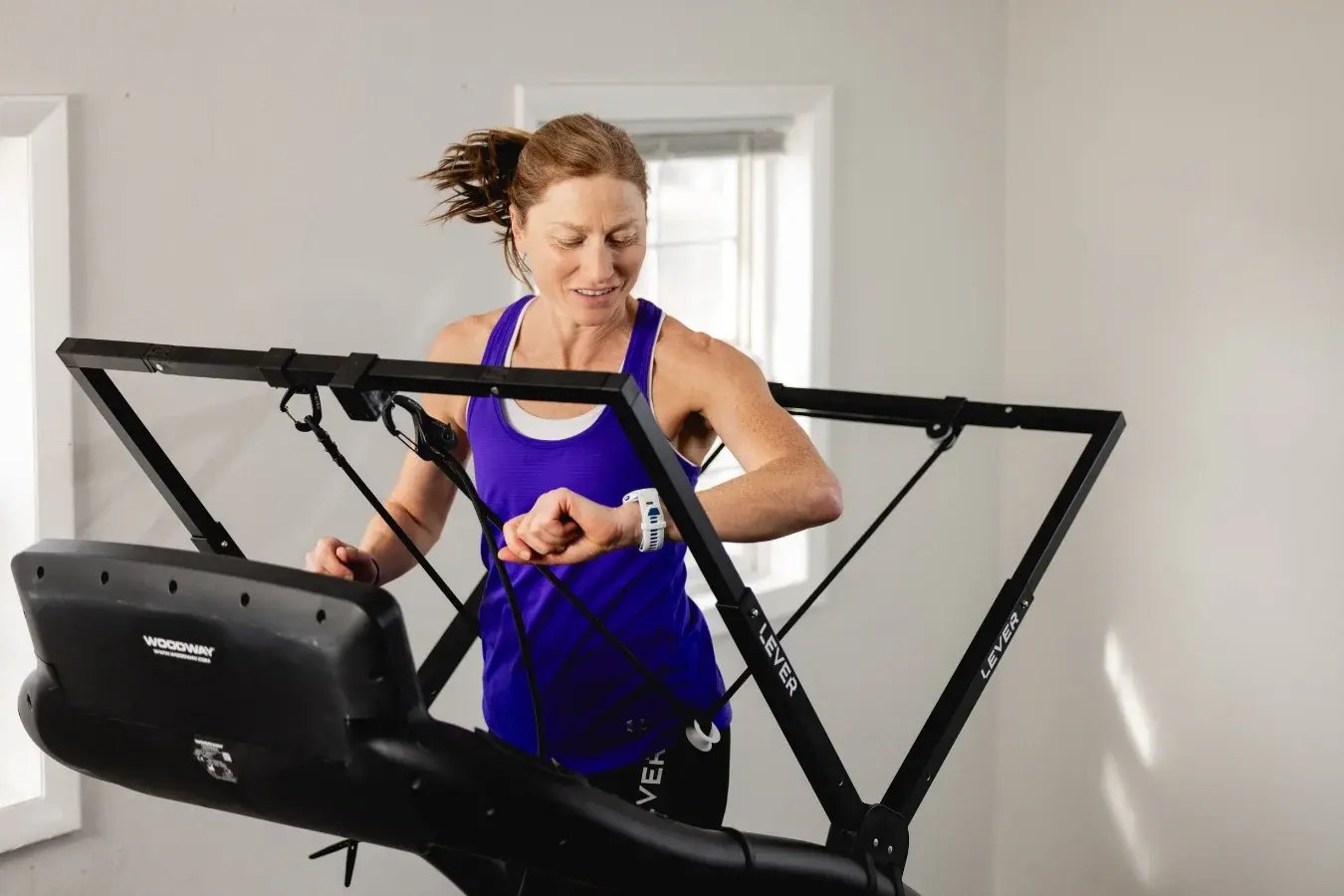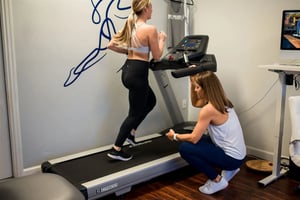Runners are often laser-focused on mileage and endurance, but strength training is an essential...
How to Transition to Indoor Training Without Losing Running Performance
Whether it's extreme heat, seasonal storms, schedule constraints, or just needing a mental reset, there are plenty of reasons runners shift their training indoors. But doing so doesn’t mean compromising performance—if anything, it can be an opportunity to strengthen your base and build resilience.
Indoor training offers more control over variables like pace, incline, and surface, allowing runners to focus on form, cadence, and conditioning without environmental interruptions. It’s also a great time to introduce recovery-focused practices, reinforce good mechanics, and reduce overuse risk through cross-training.
READ: 🏃♂️ How We Use the LEVER Body Weight Support System at Core Values PT (and Why It Works)
Most importantly, consistency is the foundation of any running program. When weather or daylight threaten your routine, the ability to train indoors ensures that you stay active, progressing, and primed for your next outdoor push—without detours or setbacks.
 Smart Ways to Adapt Your Routine
Smart Ways to Adapt Your Routine
Transitioning to indoor training isn’t about replicating your outdoor runs step-for-step—it’s about being intentional with your workouts and using the indoor environment to your advantage.
- Vary Your Treadmill Sessions
Instead of logging flat, steady miles every time, use the incline feature to simulate hill training, or incorporate speed intervals to mimic fartlek workouts. These variations not only keep things engaging but also develop strength and power. - Adjust Your Expectations
Treadmill running often feels harder at the same pace due to lack of air resistance and different ground reaction forces. Use perceived exertion or heart rate as your guide instead of focusing strictly on pace. - Keep Your Cadence in Check
It’s easy to overstride on a treadmill. Focus on maintaining a quick cadence (around 170–180 steps per minute) to stay efficient and reduce joint stress. - Use Indoor Tools to Your Advantage
Running apps, virtual races, and smart treadmills can simulate outdoor terrain and help you stay mentally engaged when the scenery doesn’t change.
Indoor training doesn’t have to be a downgrade—it can be a strategic tool to fine-tune your running engine during challenging seasons.
Strength, Stability, and Mobility Work You Can’t Skip
One of the biggest advantages of moving indoors? More time and energy to focus on the parts of your training that often get skipped—like strength, stability, and mobility. These components are the unsung heroes of injury prevention and long-term performance.
At Core Values, we emphasize these elements through our Resilient Runner Program, which helps runners build the kind of balanced strength that translates to smoother, safer strides. Think glute activation, single-leg control, and dynamic core stability—exactly what you need to stay powerful and aligned over long distances.
READ: Winter Garden's Guide to Dry Needling
Mobility work is just as crucial. Hip, ankle, and thoracic spine mobility all influence how well you move through your stride. Addressing restrictions during your indoor cycle helps you return outdoors moving better than before.
And don’t forget recovery. Techniques like dry needling can ease tension, improve circulation, and reduce soreness—especially if you're increasing strength work or adjusting to a new training surface.
Indoor training isn’t just a backup plan. It’s a smart time to round out your routine and reinforce the fundamentals that make your running stronger.
How to Track Running Progress and Stay Motivated Indoors
One of the biggest challenges of indoor training isn’t physical—it’s mental. Without the changing scenery or outdoor race goals, it can be hard to stay motivated. But with the right tools and mindset, indoor training can be just as rewarding and measurable as your outdoor miles.
- Use Performance Benchmarks
Track your indoor runs using heart rate, cadence, or Rate of Perceived Exertion (RPE). These metrics provide meaningful insight into your fitness—even when pace isn't the priority. - Set Weekly or Monthly Goals
Instead of aiming for distance alone, focus on goals like “three strength sessions,” “one hill workout,” or “consistent warm-ups.” These process-oriented goals help maintain momentum and structure. - Leverage Virtual Tools
Apps like Zwift, Peloton, or even built-in treadmill programs offer virtual courses, challenges, and community support that can make each session feel more dynamic. - Keep a Training Journal
Log how you felt, what you accomplished, and where you want to improve. Reflection helps connect the dots between effort and progress, even when you're running in place.
Staying engaged indoors is about variety, clarity, and connection to your broader goals. Done right, indoor training can become a key part of your evolution—not a pause button on your performance
Support for Runners in Winter Garden
You don’t have to navigate the shift to indoor training on your own. At Core Values in Winter Garden, we specialize in helping runners adapt their routines without sacrificing progress or performance.
Whether you're looking to stay strong through seasonal transitions or address nagging injuries, our team is here to support you. From running-specific physical therapy to movement assessments for CrossFit athletes, we provide expert guidance tailored to your goals.
READ: The Adaptable Runner: Building Durability Through Targeted PT
We also help runners integrate strength, mobility, and recovery into their programs so that indoor seasons become a launchpad—not a limitation. Our clinic is built to support the full spectrum of running health, from injury rehab to performance enhancement.
Ready to stay sharp, motivated, and injury-free through your indoor training cycle? Reach out to schedule a session and let’s get started.



